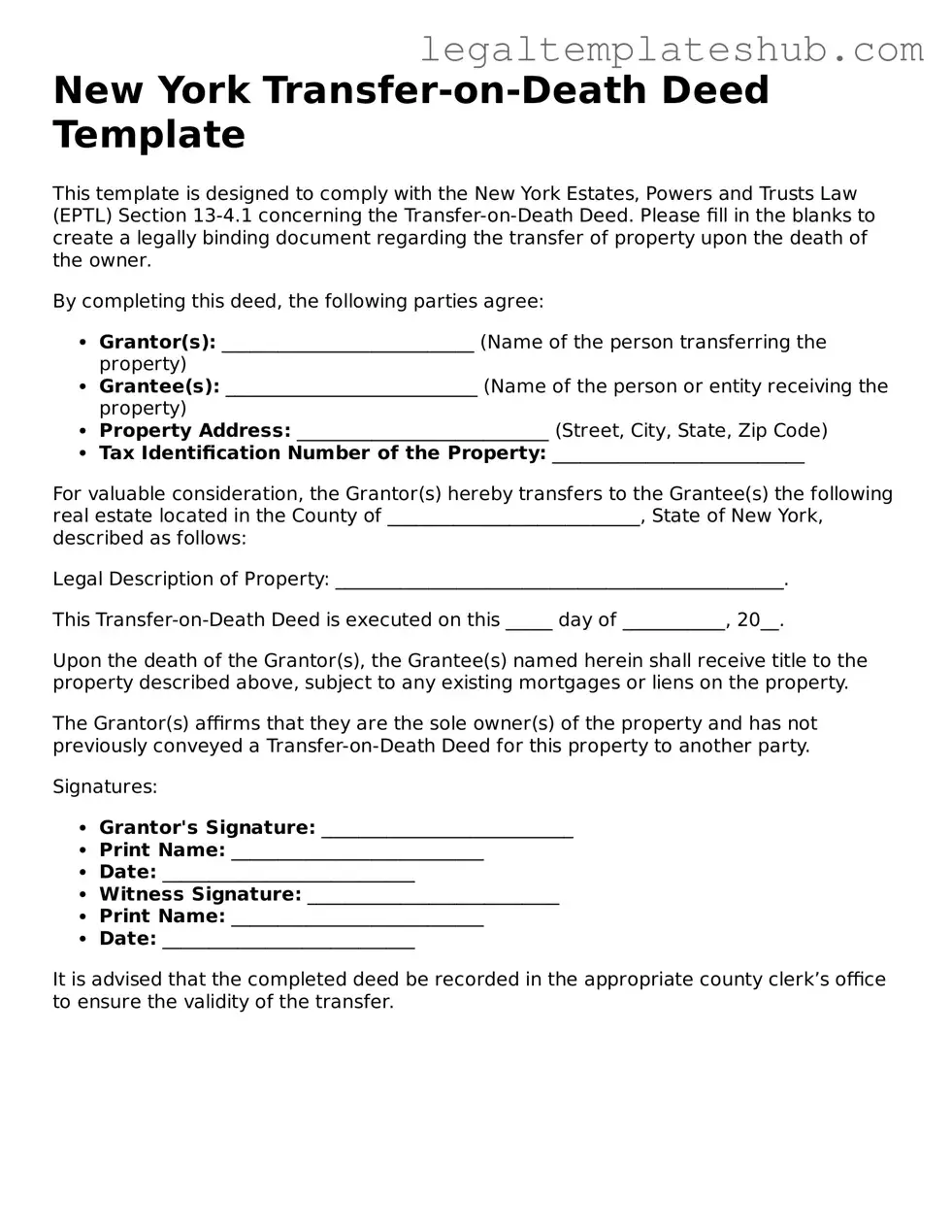Printable Transfer-on-Death Deed Document for New York
The Transfer-on-Death Deed form in New York allows property owners to designate beneficiaries who will automatically receive their property upon the owner's death, bypassing the lengthy probate process. This legal tool provides a straightforward way to ensure that your assets are transferred according to your wishes, offering peace of mind for you and your loved ones. To learn more and take the first step in securing your property transfer, fill out the form by clicking the button below.
Access Editor
